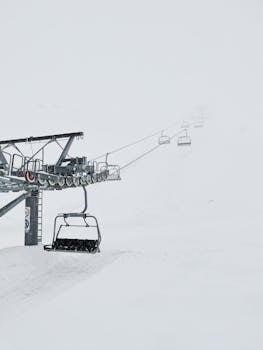Pontoon Lift Guides⁚ An Overview
Navigating the world of pontoon lifts can be complex. This guide provides a comprehensive overview, helping you choose the perfect lift to protect your boat and simplify your boating experience. Learn about lift types, features, and essential considerations.
Understanding the Basics of Pontoon Lifts
Pontoon lifts are essential for protecting your pontoon boat from water damage, corrosion, and algae growth. They elevate the boat out of the water when not in use, preventing hull deterioration and reducing the need for frequent cleaning. Choosing the right lift depends on several factors, including boat size, weight, and local water conditions.
These lifts come in various designs, each with its own advantages. Understanding the basic mechanics and types of lifts available is crucial for making an informed decision. Additionally, consider the power source options and accessories that can enhance the functionality and convenience of your pontoon lift system.
Types of Pontoon Lifts
Several types of pontoon lifts exist, each designed for specific needs and water conditions. Common types include vertical lifts, floating lifts, and hydraulic lifts, each offering unique advantages for pontoon boat owners.
Vertical Lifts for Limited Space
Vertical lifts are an ideal choice when space is at a premium or water depth is shallow. These lifts operate by raising the pontoon boat straight up and out of the water, minimizing the area required for operation. This makes them suitable for docks with limited slip width or in areas where water levels fluctuate significantly.
Their design protects against prolonged water exposure, preventing algae growth and hull deterioration. Consider a vertical lift if you need a space-saving solution that effectively safeguards your pontoon from the elements. Adjustable width bunks are a desirable feature for these lifts.
Floating Pontoon Boat Lifts
Floating pontoon boat lifts offer a unique approach by utilizing buoyancy to raise and lower your pontoon. These lifts are designed to float alongside your dock, providing a stable platform for your boat. They are especially useful in areas with deep or fluctuating water levels, as they adjust automatically to changes in water depth.
Floating lifts minimize the hassle of covering your boat and protect it from algae growth and corrosion. They are easy to install and can be a convenient option where traditional lifts are not practical; Consider the benefits of stability and adaptability when choosing a floating pontoon boat lift.

Factors to Consider When Choosing a Pontoon Lift
Selecting the right pontoon lift involves assessing several key factors. These include your boat’s dimensions and weight, water conditions at your dock, and available power options. Careful consideration ensures optimal protection and functionality.
Pontoon Boat Size, Weight, and Shape
The dimensions, weight, and shape of your pontoon boat are primary considerations when selecting a lift. Newer pontoon models can be larger and heavier, requiring lifts specifically designed for pontoons. Standard lifts might not provide adequate support for these modern boats. Measure your pontoon’s length and width, and determine its overall weight, including any additional equipment or accessories you typically carry. This information is crucial for ensuring the lift has sufficient capacity and proper bunk support. Adjustable bunks are highly desirable, as they allow the lift to conform precisely to the boat’s unique dimensions, enhancing stability and preventing damage. Consider the shape of your pontoons and choose a lift that accommodates this design.
Water Depth and Space Limitations
Assess the water depth at your dock or shoreline, as this will influence the type of pontoon lift you can install. Vertical lifts are ideal for shallow water conditions, as they raise the boat straight up. Limited space might necessitate a lift with a compact footprint. Consider the available area around your dock or pier to ensure the chosen lift can be safely operated and accessed. Measure the slip width if docking in a marina. Floating docks and fixed docks also present different space considerations. Be sure to account for any potential obstructions or obstacles that could hinder lift operation. Selecting the right lift will depend on understanding all these factors.
Power Source Options
Pontoon lifts come with various power source options to suit different needs and preferences. Manual lifts are the most basic, relying on hand-cranking or winching. Electric lifts offer convenience and ease of operation, typically powered by a 120V or 220V connection. Hydraulic lifts provide smooth and powerful lifting action. Solar-powered lifts are an eco-friendly option, utilizing solar panels to charge a battery. Consider the availability of electricity at your dock, as well as your budget and desired level of automation. Electric and hydraulic lifts may require professional installation. Evaluate the long-term costs and environmental impact of each power source before making a decision.

Pontoon Lift Accessories
Enhance your pontoon lift with various accessories designed for convenience and protection. These additions can improve ease of use, boat security, and overall lifespan of your pontoon and lift system, making boating more enjoyable.
Pontoon Guides and Rails
Pontoon guides and rails are essential accessories for pontoon lifts, ensuring your boat is properly aligned and protected during the lifting and lowering process. These guides act as bumpers, preventing the pontoon boat from making direct contact with the lift structure, reducing the risk of scratches or damage. Adjustable models are particularly desirable, as they can accommodate varying pontoon widths for a customized fit.
They also simplify the process of positioning the boat on the lift, especially in windy conditions or when visibility is limited. Investing in quality guides and rails enhances the safety and longevity of your pontoon boat and lift system.
Motor Stops
Motor stops are crucial pontoon lift accessories designed to prevent your boat from over-traveling during the lifting process. They act as a physical barrier, ensuring the motor or stern of the pontoon boat doesn’t collide with the lift’s frame or other structures; Proper placement of the motor stop is essential for effective protection, and they are especially useful for pontoon boats where high rake propellers tend to lift the bow of the boat.
These accessories contribute significantly to the safety and longevity of your pontoon boat and lift system by preventing potential damage from accidental overruns. They are a worthwhile investment for any pontoon boat owner.

Pontoon Lift Prices and Brands
Pontoon lift prices vary widely based on factors like capacity, features, and manufacturer. Explore popular brands like ShoreMaster and Hewitt, and understand the factors influencing the cost of your ideal pontoon lift.
Price Variation Factors
Several elements influence the price of pontoon lifts, making it essential to understand these factors before investing. The pontoon boat’s size, shape, and weight significantly impact the required lift capacity, directly affecting cost. Desired features, such as remote control operation or specialized bunk systems, will also increase the price. Warranty coverage and the manufacturer’s reputation are crucial factors.
A Hewitt pontoon boat lift might cost less than a ShoreMaster lift due to brand positioning and features. Consider loan options, but remember interest fees can be steep. Ultimately, balancing your needs with your budget is essential when choosing a pontoon lift.
Popular Pontoon Lift Manufacturers (ShoreMaster, Hewitt)
When selecting a pontoon lift, reputable manufacturers offer quality and reliability. ShoreMaster is known for its dime-welded pontoon lifts, designed for maximum stability and durability. Their lifts accommodate the increasing size of modern pontoons and tritoons, offering precision-welded aluminum construction for superior performance. ShoreMaster lifts also boast adaptability with adjustable cradles or bunks to fit different boat styles.
Hewitt, another popular manufacturer, provides narrow pontoon lifts that evenly distribute weight, minimizing the risk of damage, even for longer pontoon boats. These brands offer different features and price points, catering to various needs and budgets. Researching and comparing manufacturers helps ensure a well-informed decision.

Installation and Maintenance of Pontoon Lifts
Proper installation and regular maintenance are crucial for ensuring the longevity and safe operation of your pontoon lift. Following manufacturer guidelines and performing routine checks will help prevent costly repairs.
Installation Tips
Before starting, carefully read the manufacturer’s instructions. Ensure you have the necessary tools and assistance. Accurate placement is crucial, considering water depth and potential obstructions. For vertical lifts, ensure a level base. Floating lifts need proper anchoring to prevent drifting. Double-check all connections and hardware for tightness. If unsure, hire a professional installer. Consider adding pontoon guides to aid alignment during lift operation. Remember, safety first – wear appropriate protective gear during installation. Proper installation guarantees smooth and reliable operation, protecting your pontoon boat for years to come. Inspect the lift carefully after installation.
Maintenance Tips
Regular maintenance is essential for pontoon lift longevity. Inspect cables, winches, and other moving parts for wear and tear. Lubricate moving parts regularly with marine-grade grease. Check for corrosion, addressing it promptly to prevent further damage. Tighten loose bolts and connections. Annually inspect the lift’s structure for cracks or deformation. Clean the lift regularly to remove algae and debris. Before winter, properly store or protect your lift, following manufacturer’s recommendations. Pay special attention to the power source, ensuring it’s protected from the elements. A well-maintained lift will provide years of reliable service, keeping your pontoon boat safe and accessible. Remember to consult your owner’s manual.
Used Pontoon Lifts
Considering a used pontoon lift can save money. However, inspect it carefully for wear, rust, or damage. Check its weight capacity and ensure it meets your boat’s needs before buying.
Considerations When Buying Used
When purchasing a used pontoon lift, age is a major factor. Carefully inspect the lift for signs of wear and tear, including rust and damaged components. Verify the lift’s weight capacity to ensure it adequately supports your pontoon boat, accounting for any additional weight from equipment or passengers.
It’s also important to check the condition of the cables, pulleys, and other moving parts. Ask about the lift’s maintenance history and whether it has been regularly serviced. Be aware that used lifts are typically sold “as-is” with no warranty, so a thorough inspection is crucial to avoid costly repairs down the road.
Pontoon Lift Safety
Safety is paramount when operating a pontoon lift. Always adhere to the manufacturer’s guidelines and weight restrictions to prevent accidents. Before each use, inspect the lift for any signs of damage or wear, paying close attention to cables, pulleys, and support structures; Ensure the lift is properly grounded to prevent electrical hazards;
Never exceed the lift’s maximum weight capacity, and distribute the load evenly to maintain stability. Keep children and pets away from the lift during operation. Avoid operating the lift in adverse weather conditions, such as high winds or storms. If you are unsure about any aspect of the lift’s operation, consult a qualified professional.